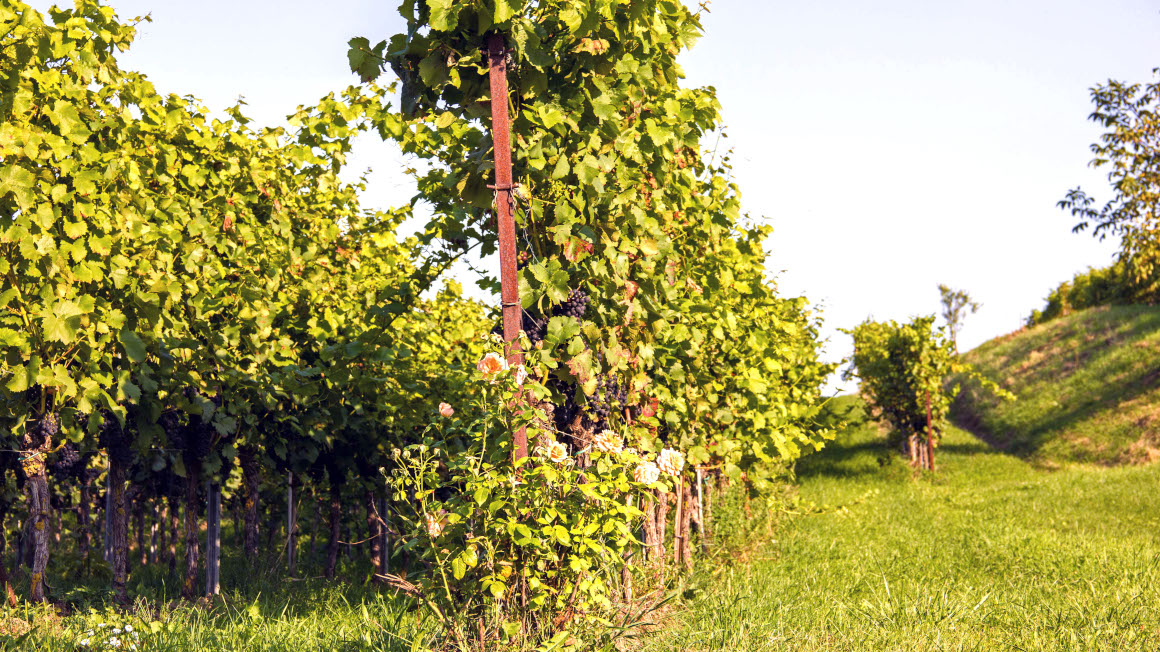Better arming grape varieties against fungi
Under the leadership of the Julius Kühn Institute, a European research team wants to analyse fungus-resistant grapevines and identify molecular markers for grapevine breeding. The cuticle on the berry skin could play a key role.

Climate change is also increasingly causing crop losses in viticulture. In particular, the rapid alternation between drought and heavy rainfall damages the grapes and promotes the spread of fungal diseases such as vine peronospora (Plasmopara viticola) and grey mould rot (Botrytis cinerea). Winegrowers therefore use plant protection products to protect the grape varieties. In order to meet the climate-related challenges in viticulture in an environmentally friendly way, experts are focussing on fungus-resistant grape varieties, known as PIWIs. They require fewer pesticides, which leads to a lower carbon footprint and less soil pollution and also means less labour for winegrowers. Despite these advantages, PIWIs are rarely found in German wine-growing regions. Their share is currently only 3%. But this is set to change.
Promoting the reorganisation of viticulture in the border region
In the EU project WiVitis, researchers from Germany, France and Switzerland are working with four winegrowing companies in the Upper Rhine region to increase the cultivation and popularity of these fungus-resistant grape varieties and thus promote the sustainable reorganisation of the winegrowing industry in the border region. The project is coordinated by the Julius Kühn Institute for Grapevine Breeding, Geilweilerhof in Siebeldingen, and is funded by the EU with around 2 million euros as part of the Upper Rhine Interreg programme.
Testing PIWIs and breeding material for grape characteristics
In the project, PIWIs and breeding material are to be comprehensively evaluated over several years with regard to various grape characteristics in order to be able to better assess the resistance of grapes to weather extremes and vine diseases in the future. The susceptibility of the vines to vine peronospora and botrytis infestation is also to be assessed using potted vines by means of a controlled increase in temperature. Finally, the data will be used to further develop forecasting models for grape health and thus make it easier for winegrowers to select varieties and promote the introduction of new grape varieties.
Identifying molecular markers for PIWI breeding
When identifying the breeding material, the focus is on high Botrytis resistance. To this end, the researchers want to develop molecular markers for vine breeding in the project. The JKI has already identified factors against the damage caused by grey mould rot caused by Botrytis cinerea for factors such as loose berry quality: "The wax coating on the surface of the berry skin, the so-called cuticle, plays a key role here," explains project coordinator Katja Herzog, "the cuticle can be water-repellent and very dense, for example, and thus form a decisive barrier against Botrytis infestation and other damage to the berry."
The project will use sensor-based, analytical and microscopic methods to analyse the characteristics of various PIWI varieties and compare them with existing breeding material in order to create valid research data sets for the Upper Rhine region and develop strategies for cultivation.
bb


